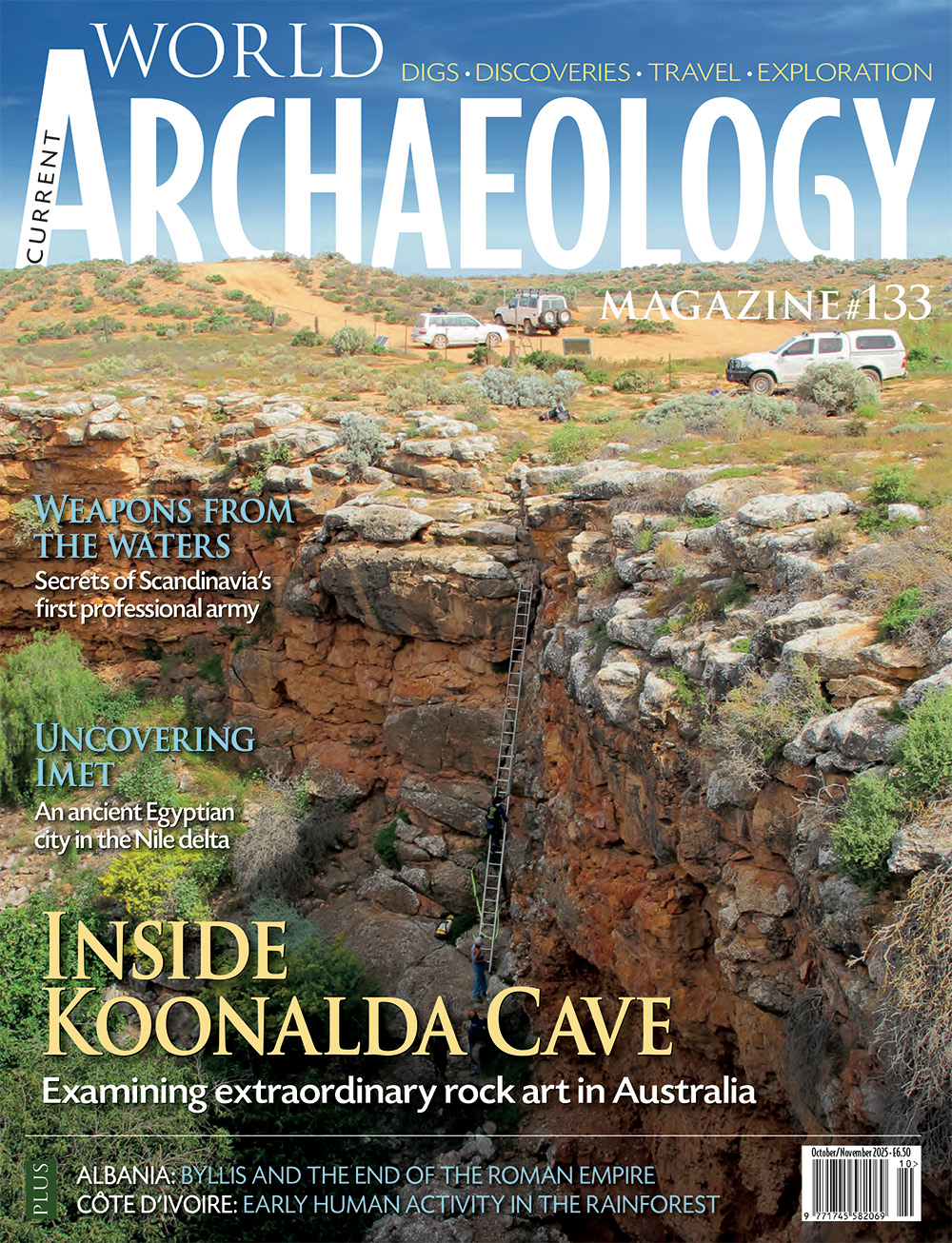Deep beneath Australia’s Nullarbor Plain lies Koonalda Cave. Lakes can be found within its subterranean passages, a matter of no little import in this vast semi-arid landscape. But it was not just water that drew people into its depths. Flint nodules provided easy access to a valued raw material, while the walls of the cave presented a canvas for rock art. In our cover feature, we question what these markings could mean, and examine the history of research at the site.
At Tell Nabasha, in Egypt, the archaeology is raised a little above the surrounding landscape, on a modest sandy knoll in the Nile delta. This was once home to a thriving city that housed the main cult centre of Wadjet, the goddess of Lower Egypt. Now excavations at the site are revealing intriguing glimpses of both the afterlife of the temple and daily activity in the surrounding settlement.
Somewhere that a human presence remained elusive, until recently, was in tropical rainforests before around 73,000 years ago. In 2020, a team secured samples from a site at Anyama, in the Côte d’Ivoire, which had previously produced an important set of stone tools. Ingenious dating methods have now shed new light on humanity’s early involvement with jungles.
It was interaction with water that resulted in a major collection of militaria being consigned to a lake at Illerup Ådal, Denmark. The event was surely to mark a major victory. Studying the finds reveals a force so carefully organised that it can stake a claim to being Scandinavia’s first professional army.
In our travel section, Richard Hodges visits the picturesque remnants of a former Graeco-Roman town at Byllis, in Albania. As well as delighting visitors, the archaeology of the site invites questions about why this once-flourishing settlement, centuries in the making, was abandoned in Late Antiquity.
On a final note, CWA was sad to learn that Brian Fagan, one of our former columnists, has passed away. Nadia Durrani has penned a tribute to her friend and long-term collaborator.

